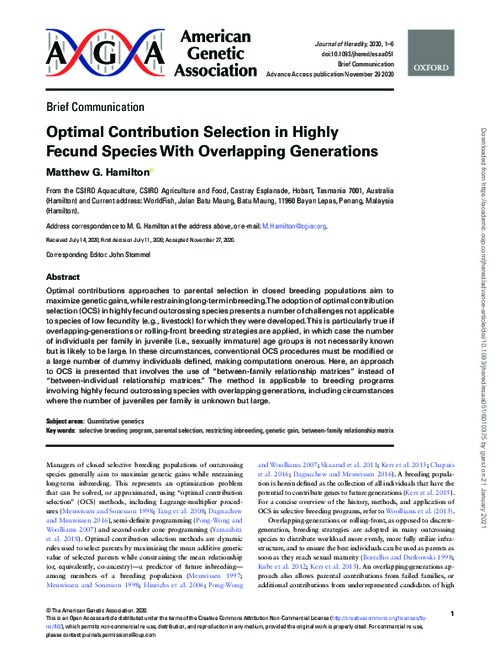Optimal contribution selection in highly fecund species with overlapping generations

Optimal contributions approaches to parental selection in closed breeding populations aim to maximize genetic gains, while restraining long-term inbreeding. The adoption of optimal contribution selection (OCS) in highly fecund outcrossing species presents a number of challenges not applicable to species of low fecundity (e.g., livestock) for which they were developed. This is particularly true if overlapping-generations or rolling-front breeding strategies are applied, in which case the number of individuals per family in juvenile (i.e., sexually immature) age groups is not necessarily known but is likely to be large. In these circumstances, conventional OCS procedures must be modified or a large number of dummy individuals defined, making computations onerous. Here, an approach to OCS is presented that involves the use of “between-family relationship matrices” instead of “between-individual relationship matrices.” The method is applicable to breeding programs involving highly fecund outcrossing species with overlapping generations, including circumstances where the number of juveniles per family is unknown but large.
Permalink
Date Available
Type
Publisher
ISSN
0022-1503
Copyright
CC-BY-4.0
Research Themes
Language